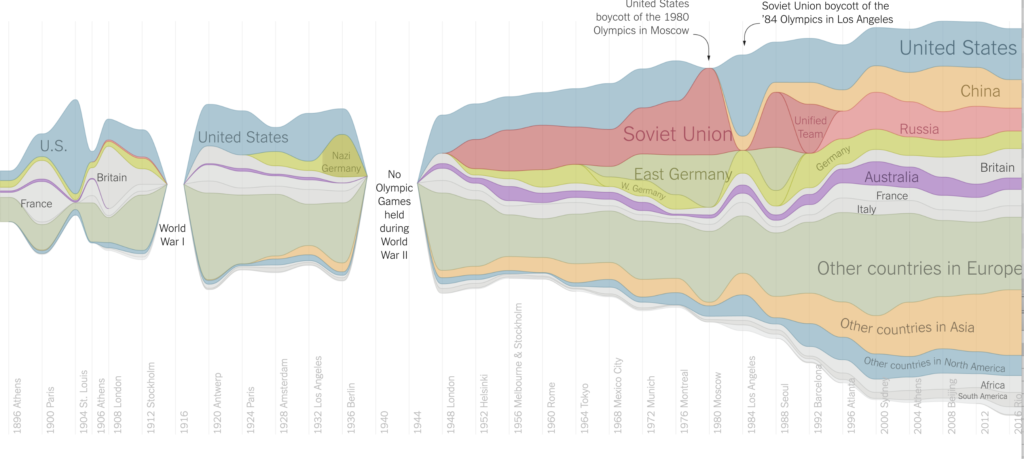This article uses multiple visuals conveying Olympic medals won by countries; the first visual provides an overview of total medals per country or region, while the visuals that follow disaggregate this information by sport. The visuals are striking in that they convey a lot of information – the longer you engage with it, the more you discover. The first visual gives a timeline; the locations of Olympics; the years in which Olympics were not operating; years in which select countries were not participating; and a sense of trends related to both medals by country and total medals awarded at the Olympics. On the sport-disaggregated charts, you can also hover your mouse over the image to see exactly how many of each type of medal any given country won, in any given year. I am impressed by the amount of information conveyed within a visual. However, as a reader, I do not think that the visuals are easily accessible. It took my sometime and reading to understand the visuals and discover its dimensions. I believe that this is because the author of the visuals attempted too many dimensions in lieu of simple and well-labeled visuals. There are notable aspects that could be improved – for example, the y axis is un-labeled and should be for clarity; the wave patterns in the chart would be easier to read if they were aligned at the bottom. Regardless, I think communicating too much information is the largest pitfall of this visual – and that aside from the Olympic-history enthusiast or data visuals/storytelling analyst, the message of the graphics will be lost to audiences.

https://www.nytimes.com/interactive/2016/08/08/sports/olympics/history-olympic-dominance-charts.html